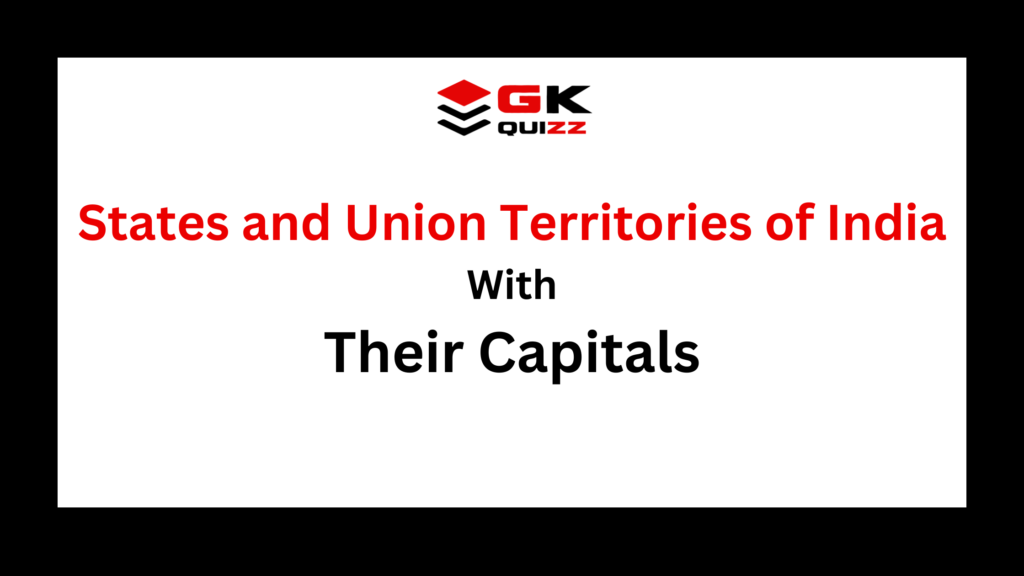India is a diverse and vast nation, known for its rich cultural heritage, languages, and geographical variety. One of the fundamental questions many people have about this country is: How many states in India? Whether you’re a student, traveler, or just curious about Indian geography, understanding India’s states and union territories is essential.
- India’s Political Division: States and Union Territories
- Key Facts
- Evolution of India’s States and Union Territories
- Final Thoughts
- FAQs – How Many States in India 2025
India’s Political Division: States and Union Territories
As of 2025, India comprises 28 states and 8 Union Territories. Each state has its own government, while Union Territories are generally governed by the Central Government, although some have their own legislative assemblies.
Let’s break down this structure in detail.
1. States of India
India’s 28 states cover a broad range of cultures, languages, and histories. Each state has a legislative assembly and operates under a Chief Minister, who leads the state government. These states also have unique administrative responsibilities, such as managing education, health, agriculture, and more.
Here’s the complete list of the 28 states:
- Andhra Pradesh
- Arunachal Pradesh
- Assam
- Bihar
- Chhattisgarh
- Goa
- Gujarat
- Haryana
- Himachal Pradesh
- Jharkhand
- Karnataka
- Kerala
- Madhya Pradesh
- Maharashtra
- Manipur
- Meghalaya
- Mizoram
- Nagaland
- Odisha
- Punjab
- Rajasthan
- Sikkim
- Tamil Nadu
- Telangana
- Tripura
- Uttar Pradesh
- Uttarakhand
- West Bengal
2. Union Territories of India
Union Territories, unlike states, are generally governed directly by the Central Government. However, some Union Territories, like Delhi and Puducherry, have partial state-like legislatures. These territories are smaller and often have significant strategic, cultural, or economic importance.
Here’s the list of the 8 Union Territories:
- Andaman and Nicobar Islands
- Chandigarh
- Dadra and Nagar Haveli and Daman and Diu
- Lakshadweep
- Delhi
- Puducherry
- Ladakh
- Jammu and Kashmir
Key Facts
- Largest State by Area: Rajasthan
- Smallest State by Area: Goa
- Most Populated State: Uttar Pradesh
- Least Populated State: Sikkim
India’s Union Territories vary significantly as well, with Delhi being the most populous and Lakshadweep being the least populated.
Also Read…..
General GK Quiz: 100+ Questions to Boost Your Knowledge
Evolution of India’s States and Union Territories
The number of states and Union Territories has changed over the years. Post-independence, India had fewer states, which were reorganized over time based on language, cultural identities, and administrative needs.
Telangana was the last state to be added in 2014, carved out from Andhra Pradesh. Similarly, Jammu and Kashmir was reorganized in 2019, creating the Union Territories of Jammu & Kashmir and Ladakh.
Final Thoughts
India’s 28 states and 8 Union Territories contribute to the country’s dynamic and complex structure. This distribution allows India to celebrate regional diversity while ensuring administrative efficiency across a vast geography.
Whether you’re exploring India’s landscapes or learning about its governance, knowing the states and Union Territories provides valuable insights into the heart of the nation.
Let us know in the comments if you have visited any of these states or if there’s one you’re eager to explore!
FAQs – How Many States in India 2025
1. How many states are there in India in 2025?
As of 2025, India has 28 states and 8 Union Territories.
2. Has the number of states in India changed recently?
No, there has been no change in the number of states in India since the bifurcation of Jammu & Kashmir into two Union Territories in October 2019.
3. What is the difference between a state and a Union Territory?
A state has its own elected government and legislative powers. A Union Territory (UT) is governed directly by the Central Government, although some UTs like Delhi and Puducherry have partial statehood with their own legislatures.
4. Which is the newest state or Union Territory in India?
The latest territorial change occurred in 2019 when Jammu and Kashmir was reorganized into two Union Territories: Jammu & Kashmir, and Ladakh.
5. Can the number of states in India change in the future?
Yes, the Indian Parliament has the power to create new states, merge existing ones, or alter boundaries under Article 3 of the Constitution of India. However, such changes require significant legal and administrative steps.
6. Why is it important to know the number of states in India?
Understanding the structure of Indian states and Union Territories helps in learning about governance, regional administration, and geography—especially for competitive exams and general knowledge.
7. Are Union Territories counted as states?
No, Union Territories are not considered states, but they are integral parts of the Indian Union with different administrative setups.
8. Where can I find the official list of Indian states and UTs?
You can find the most up-to-date list on the official website of the Government of India or visit the Ministry of Home Affairs portal.
9. Is Delhi a state or a Union Territory?
Delhi is a Union Territory with special status. It has its own elected legislative assembly but certain powers, especially related to law and order, remain with the central government.
10. How are new states formed in India?
New states are formed through Parliamentary legislation, often based on linguistic, cultural, or administrative reasons. Public demand and political consensus play a significant role.


